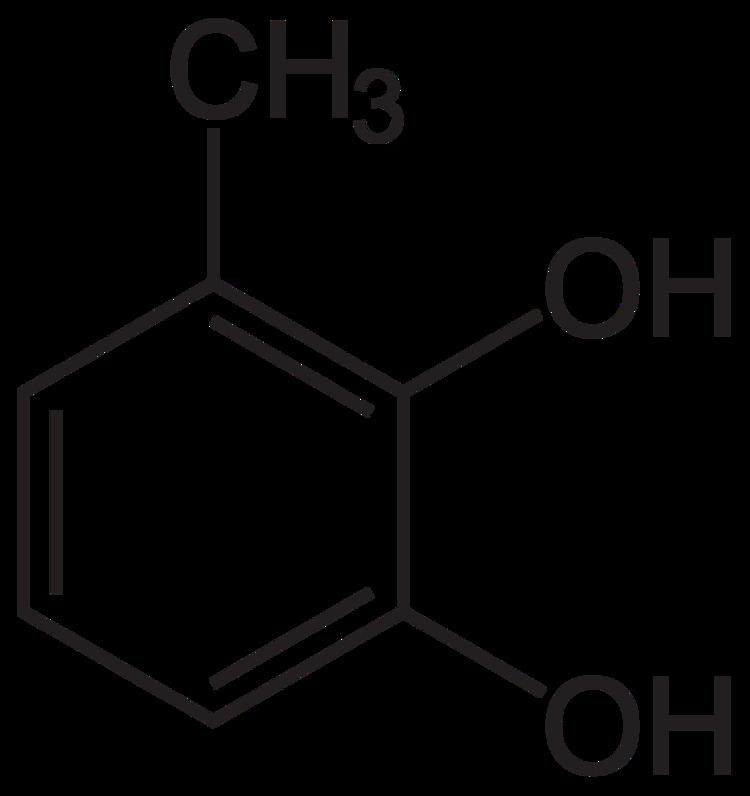 | ||
Metabolism
The enzyme 1,2-dihydroxy-6-methylcyclohexa-3,5-dienecarboxylate dehydrogenase uses 1,2-dihydroxy-6-methylcyclohexa-3,5-dienecarboxylate and NAD+ to produce 3-methylcatechol, NADH and CO2.
The isofunctional enzymes of catechol 1,2-dioxygenase from species of Acinetobacter, Pseudomonas, Nocardia, Alcaligenes and Corynebacterium oxidize 3-methylcatechol according to both the intradiol and extradiol cleavage patterns. However, the enzyme preparations from Brevibacterium and Arthrobacter have only the intradiol cleavage activity.
Related compounds
The 3-methylcatechol structural motif is rare in natural products. Known examples include calopin and a δ-lactone derivative, O-acetylcyclocalopin A, which have been isolated from the fungus Caloboletus calopus.
References
3-Methylcatechol Wikipedia(Text) CC BY-SA
